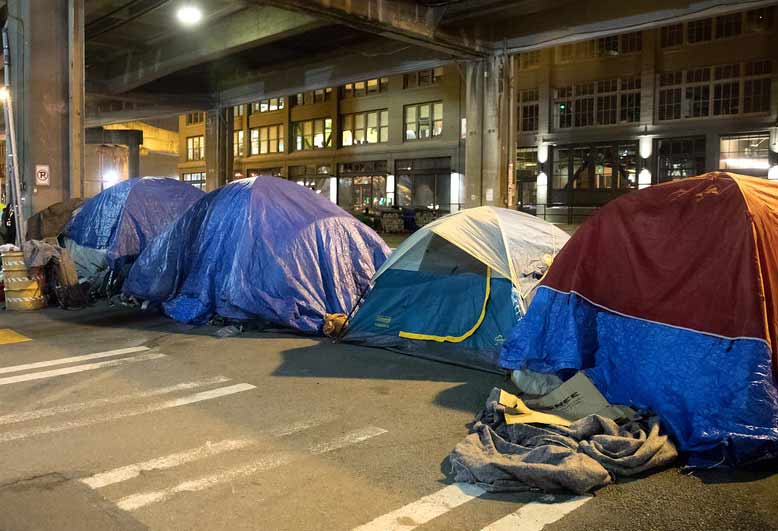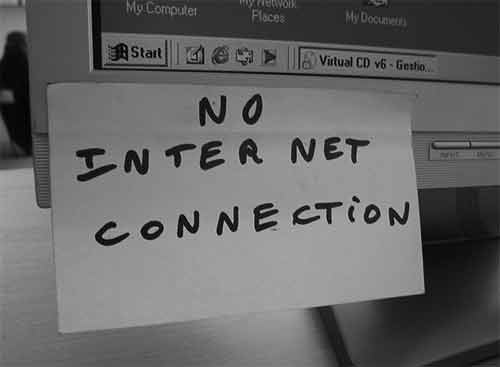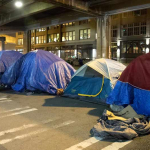Seattle’s Homeless Problem: End Of The Road

The homeless crisis in Seattle is something that many Washingtonians are very well aware of. Native residents and visitors alike both ask the question: How has it gotten this bad? From the nomadic tent cities that struggle to find a placement within the city, to the prime windows of world-renowned corporations downtown, the juxtaposition between affluence and poverty is alarming. The income gap is massive.
Although the community has only recently seen a sharp incline, homelessness has always been in the city’s limits. The history of Seattle in particular is important to know when learning about how the current day homelessness affects the city.
In the 1890s, around twenty years after the city of Seattle was incorporated, early signs of poverty were starting to become apparent. On one hand, the city was starting to flourish and grow, as many of Washington’s early industries such as lumber and fishing were starting to gain traction; On the other, the population growth led to many residents being pushed to the fringes. Petitions were made by the community to the city for help keeping their businesses afloat or for housing but the city denied them. In fact, the city even went as far as to burn some of these camps down due to complaints from other residents with reasons mainly concerning the crime increase and public health.
Soon after the 1929 crisis, one of the biggest “Hoovervilles” (shanty towns built by the unemployed and destitute during the 1930’s) was in the city of Seattle. In 1941, just after The United States entered the second world war, many of the Hoovervilles, including the largest one, were burned to the ground for wartime use.
Evidently, Seattle leaders have failed to maintain sustainable or reliable solutions for the city. Instead, they have succeeded in alienating a population of thousands.
To this day, people experiencing homelessness struggle to stabilize their lives when the city does a relocation. IDs, wallets, and medications are some of the most crucial losses. This is also incredibly triggering for some people.
Currently, the city of Seattle has a budget of millions to help aid this crisis. According to The Seattle Times, The budget has gone from $50 million in 2015 to an estimated $150 million in 2022. Where is all of this money going?
“In 2017, the City of Seattle directly invested $68,098,060 in the homelessness crisis (City of Seattle, 2017). Such spending included money for rental assistance programs that prevent people from falling into homelessness, providing transitional shelter, building low-income housing, and other various assistance methods.” (Source)
According to Seattle.gov, there are three main categories that the city invests into:
Prevention (services to help those already in homes), emergency (services that provide safe spaces for people to stay, and a connection to housing), and housing: (services focused on permanent housing solutions including; rapid re-housing, diversion, and permanent supportive housing). There are also locations where the homeless can shower and some programs where donated toiletries are accessible, though these are limited.
I believe prevention is the most important place to invest in for the following reasons: Whether the homeless population is receiving assistance from the city directly or not, there is still a massive impact on the city. Homelessness is not something that is exclusively impacting those without homes, but also the community at large. Think about the children who face the harsh realities of not being permitted to play in playgrounds and sports fields due to potential needle exposure from the percentage of homeless who are drug users. Think of the average income taxpayers who wonder where their contributions are going, and what impact their money is truly making. Think of the thousands of frustrated service workers who work in shelters with those struggling with addiction and psychosis who do not have enough assistance, and see high turnover rates, and regressions back into the streets on a daily basis. It is also disappointing to be a city official who may deeply care for the displaced community but whose efforts are ultimately having little to no impact.
“The metric’s always been, ‘Well, we’re spending more money,’” said Jon Scholes, president of the Downtown Seattle Association and a supporter of the authority’s plan. “And then you walk down the street and you don’t see a difference.” (Source)
More examples in favor of prevention are the following: If an individual is homeless, this has the potential to lower their immune system from exposure to unsanitary environments, high-stress, and high risk potential for heightened drug use. A percentage of the homeless population often is in and out of the emergency room which makes it incredibly hard on hospital staff to address everyone who needs immediate care for those with homes and without homes alike. Also, once an individual becomes homeless, it may be harder to regain stability if they are having difficulty improving their lives. This is connected to a variety of issues Seattle faces, such as a portion of homeless individuals turning to crime. This is even exacerbated by less funding for the police force, which can potentially have a hand in making local businesses suffer due to theft and vandalism primarily.
Hope exists not only in direct solutions like the aforementioned ways of getting help but also in investing in public education so students are getting more opportunities to succeed. This includes food programs, increased mental health awareness and assistance, and higher pay for teachers so they have a greater drive to connect with students that are on the fringes. More alternatives include: implementing more opportunities for apprenticeships in the workforce (so young adults can have more respected alternatives to college), lowering the cost of education (to welcome more prospective students and lower post-education debt), and overall, a different reformed curriculum in the school system that is not only more forgiving, but encourages more meaningful critical thought, diverse classes, and equal wealth distribution.
The last angle on this issue I would like to explore is: Why might Seattle’s homeless reject help? In an article written in 2021 for The Seattle Times, an article cited that the city’s outreach assistance was struggling to give referrals that the homeless would follow through with in terms of short-term shelter. There is always a hesitation before one may decide to stay in a shelter because they are extremely uncomfortable. Many people report crowding, assault, thievery, cleanliness (i.e lice and other pests), or just generally poor experiences within shelters. The staff in these facilities are more often than not, overworked with pay that isn’t reflected by the amount of effort that is given. People also may deny assistance because of an inability to be accepted. People among this group would be illegal immigrants or refugees, individuals with pets that they are not willing to part with and individuals who abuse drugs. For the latter, there is also the inverse issue, where some shelters are known to accept drug users, therefore turning off those who are working towards sobriety. What homeless residents do tend to accept referrals for are private rooms, such as single-motel rooms or tiny houses. The average length of time stayed at enhanced shelters and tiny houses in 2020 was 102 and 349 days, compared to 68 days at basic shelters.
Many more efforts are needed to be done on everyone’s part to even begin to remedy homelessness as a social epidemic. What is being done isn’t enough. It is imperative to realize that homelessness is a symptom of a variety of ills that plague society; This is including the way drug addiction is handled, our societal attitudes toward mental health, surrounding regional cities not giving their homeless populations adequate assistance and then the said community relocating to Seattle, and lastly, the popular narrative that it is primarily due to skyrocketing rents and social security payments to at risk households, those claiming disability, and individuals struggling to find work. During the COVID-19 pandemic, a large percentage of those below the poverty line were pushed into the streets, due to social programs withdrawing assistance, and shelters limiting capacity. Inversely, the homeless that previously camped in forested areas have come further in, due to scarcity of resources. This has resulted in rising health issues (mental health, illness spreading more rapidly), and increased drug use. According to an article in The Seattle Times, one local study found there to be a 50% increase in tent usage between the summers of 2019 to 2020. Seattle is not unique, because many cities across the country suffer from rising homeless populations; It would be optimistic to conclude that I believe it will improve soon, but unfortunately, in a society where many even above the poverty line struggle with ailments such as increasing living expenses, and studies reporting mental health worsening in all age groups within The United States, there is understandably a lowered initiative to change attitudes among all social classes to shift the situation.
Photo: “Seattle Homeless” by davidjlee is marked with CC BY-SA 2.0




